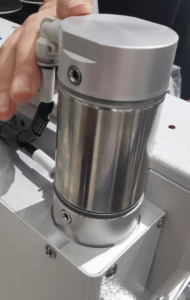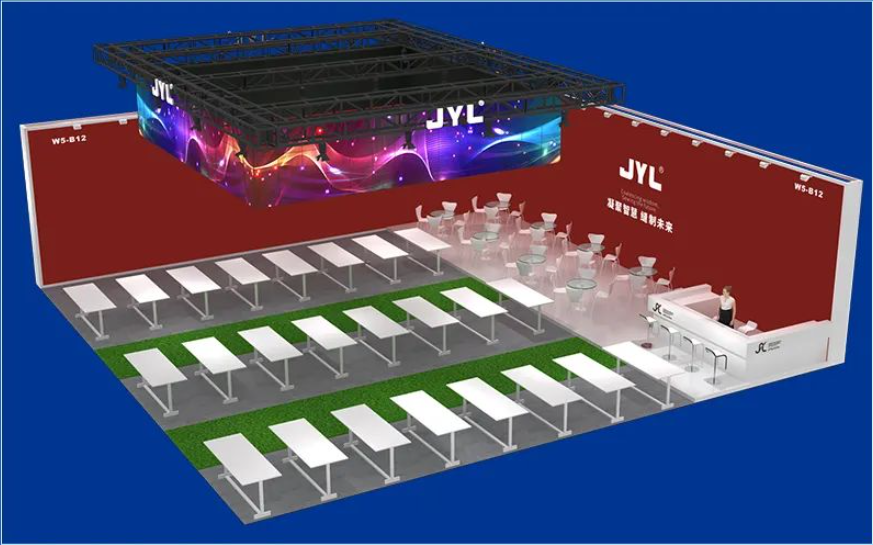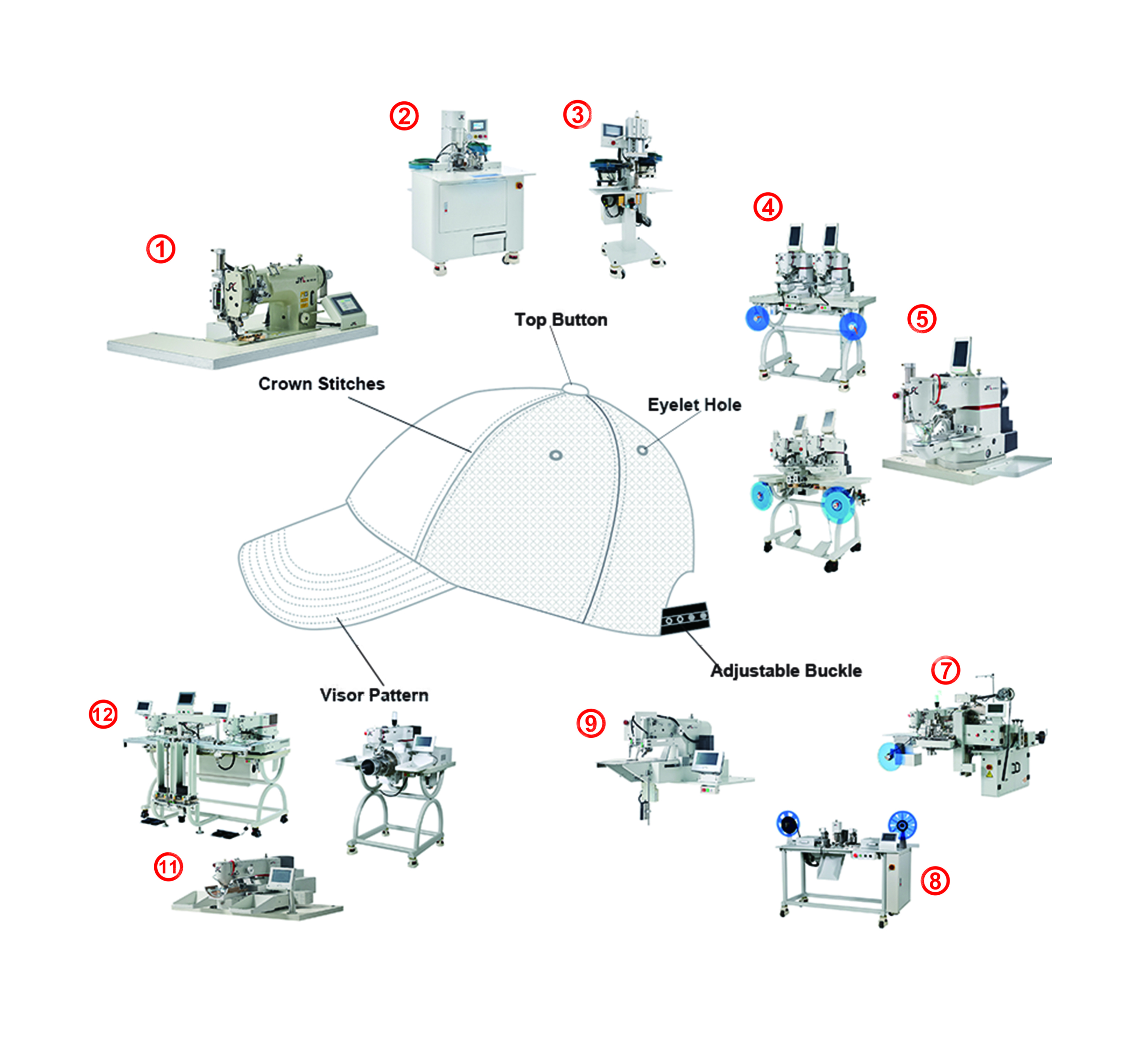What is the Difference Between Pneumatic and Hydraulic Cylinder Control in Computerized Sewing Machines?
Computerized sewing machines have played a vital role in enhancing the manifold production capabilities within the textile industry. Equipped with sophisticated features, they provide intricate sewing capabilities along with speed and precision. Cylinder control mechanisms within computerized sewing machines are essential components in the smooth functioning of the systems. Pneumatic and hydraulic cylinders are the two most commonly used control mechanisms employed in these machines to facilitate the movements of various parts. This in-depth article will explore the differences between pneumatic and hydraulic cylinder control in computerized sewing machines, their working principles, advantages, and disadvantages, as well as their applications in the industry.

A Detailed Overview of Pneumatic Cylinder Control
1.1 What is Pneumatic Cylinder Control?
Pneumatic cylinder control systems utilize compressed air to generate linear or rotary motion, enabling the movement and operation of parts in computerized sewing machines. The compressed air is channeled through a pneumatic cylinder, which then translates the force from the moving air into mechanical motion.
1.2 Components of Pneumatic Cylinder Control Systems
– Air Compressor: This device compresses atmospheric air and stores it as potential energy, which is later used to drive the functioning of the pneumatic cylinder.
– Air Filter: This component removes contaminants and debris from the compressed air, preventing potential damage to the pneumatic system.
– Air Pressure Regulator: This regulates the pressure levels in the system by adjusting the flow of compressed air.
– Control Valves: These valves control the flow of air into and out of the pneumatic cylinder, determining the direction and speed of the cylinder’s movement.
– Pneumatic Cylinder: This is the primary component of the pneumatic control system that converts the force of compressed air into mechanical motion.
1.3 Working Principle of Pneumatic Cylinder Control
In a computerized sewing machine, the pneumatic control system works by using compressed air to actuate the sewing machine’s components. The air compressor compresses atmospheric air and stores it in a reservoir. As needed, the compressed air flows through the air filter and pressure regulator, which adjust the air quality and pressure, respectively. The flow of air is controlled by the control valves that govern the movement of the pneumatic cylinder by determining the air pressure and flow directions. As the machine’s components move, the pneumatic cylinder converts the energy from the compressed air into mechanical motion, driving the sewing machine’s functions.
1.4 Advantages of Pneumatic Cylinder Control Systems
– High-Speed Operation: Pneumatic control systems allow for faster response times and high-speed operation compared to hydraulic systems.
– Lightweight: The use of compressed air machinery results in lightweight equipment, reducing installation and transportation costs.
– Low Cost: Pneumatic systems tend to be less expensive than hydraulic systems due to the reduced complexity of equipment and lower maintenance requirements.
– Cleanliness: As compressed air is used, pneumatic systems are environmentally friendly, minimizing pollution concerns and eliminating the need for hydraulic fluid disposal.
1.5 Disadvantages of Pneumatic Cylinder Control Systems
– Limited Force: Pneumatic control systems typically cannot generate the same levels of force as hydraulic systems, making them unsuitable for some heavy-duty applications.
– Air Quality Concerns: Air compressors may inadvertently introduce contaminants into the system, leading to equipment wear and tear. Proper air filtration is essential to prevent this issue.
– Noisy Operation: Compressed air machinery can be louder than hydraulic systems, which can lead to increased noise pollution in the workplace.

An In-Depth Look at Hydraulic Cylinder Control Systems
2.1 What is Hydraulic Cylinder Control?
Hydraulic cylinder control systems utilize pressurized hydraulic fluid to create linear or rotary movement, controlling the functions and operations of computerized sewing machines. By using hydraulic fluid, these systems can deliver higher force levels and quieter operation compared to pneumatic systems.
2.2 Components of Hydraulic Cylinder Control Systems
– Hydraulic Pump: This device pressurizes the hydraulic fluid, generating the flow necessary to power the hydraulic cylinder.
– Hydraulic Fluid Reservoir: This stores the hydraulic fluid used in the system, maintaining necessary fluid levels.
– Hydraulic Fluid Filters: They ensure that the hydraulic fluid is free of contaminants that could damage the internal components of the system.
– Flow Control Valves: These valves regulate the flow of hydraulic fluid, enabling the precise control of the hydraulic cylinder’s movement.
– Hydraulic Cylinder: This is the main component of the hydraulic control system, converting the hydraulic fluid’s pressure into mechanical motion.
2.3 Working Principle of Hydraulic Cylinder Control
In a computerized sewing machine, the hydraulic control system relies on pressurized hydraulic fluid to actuate the machine’s components. The hydraulic pump increases the pressure of hydraulic fluid within the system, generating a flow of fluid from the reservoir. The fluid passes through the fluid filters, which remove any debris and contaminants. The flow control valves manage the fluid’s flow rate and direction, allowing the accurate control of the hydraulic cylinder’s motion. In response, the hydraulic cylinder converts the fluid pressure into mechanical motion, facilitating the sewing machine’s operations.
2.4 Advantages of Hydraulic Cylinder Control Systems
– Greater Force: Hydraulic systems can produce higher levels of force compared to pneumatic systems, making them suitable for heavy-duty applications in the textile industry.
– Precise Control: The use of hydraulic fluid enables precise control of movement and positioning, resulting in better accuracy and overall machine performance.
– Low Noise Levels: Hydraulic systems tend to produce less noise than pneumatic systems, improving the work environment and reducing noise pollution concerns.
2.5 Disadvantages of Hydraulic Cylinder Control Systems
– Slower Response Times: Hydraulic systems typically have slower response times due to the fluid’s viscosity and the larger size of hydraulic components, which may impact overall machine speed.
– Increased Maintenance: Hydraulic systems require more maintenance than pneumatic systems to prevent fluid leaks and ensure the fluid remains uncontaminated and at the correct pressure.
– Higher Costs: Due to the increased complexity of hydraulic components and the necessity for ongoing maintenance, hydraulic systems can be costlier compared to pneumatic systems.

Factors Influencing the Choice Between Pneumatic and Hydraulic Cylinder Control
3.1 Speed Requirements
One of the main factors to consider when choosing between pneumatic and hydraulic cylinder control is the speed requirements of the sewing machine’s operations. Those prioritizing high-speed operation and faster response times may opt for a pneumatic control system, while those requiring precise control and greater force but less concerned with speed could choose a hydraulic system.
3.2 Force Requirements
Depending on the specific sewing application, varying levels of force may be required. Hydraulic control systems generally offer a higher force output than pneumatic systems, ideal for heavy-duty applications. In contrast, pneumatic systems provide adequate force for most sewing operations and are cost-effective, easier to integrate and maintain.
3.3 Noise Levels
Noise pollution in the workplace can impact worker productivity and overall comfort. Hydraulic systems typically produce less noise than pneumatic systems, which may be preferred if noise pollution is a concern.
3.4 Maintenance and Cost Concerns
Comparing maintenance requirements and costs is crucial when selecting a cylinder control system. Hydraulic systems may require more maintenance than pneumatic systems, increasing costs over time. However, hydraulic systems offer the potential for increased force and precision.
Conclusion
Understanding the differences between pneumatic and hydraulic cylinder control in computerized sewing machines is essential for selecting the most suitable system for a given application. Both systems have unique benefits and drawbacks, and determining the ideal choice requires careful consideration of factors such as speed, force requirements, noise levels, maintenance, and cost concerns. As technology continues to develop, it is likely that we will see further innovations in both pneumatic and hydraulic cylinder control systems, driving improvements in the textile industry’s production capacity and efficiency.




